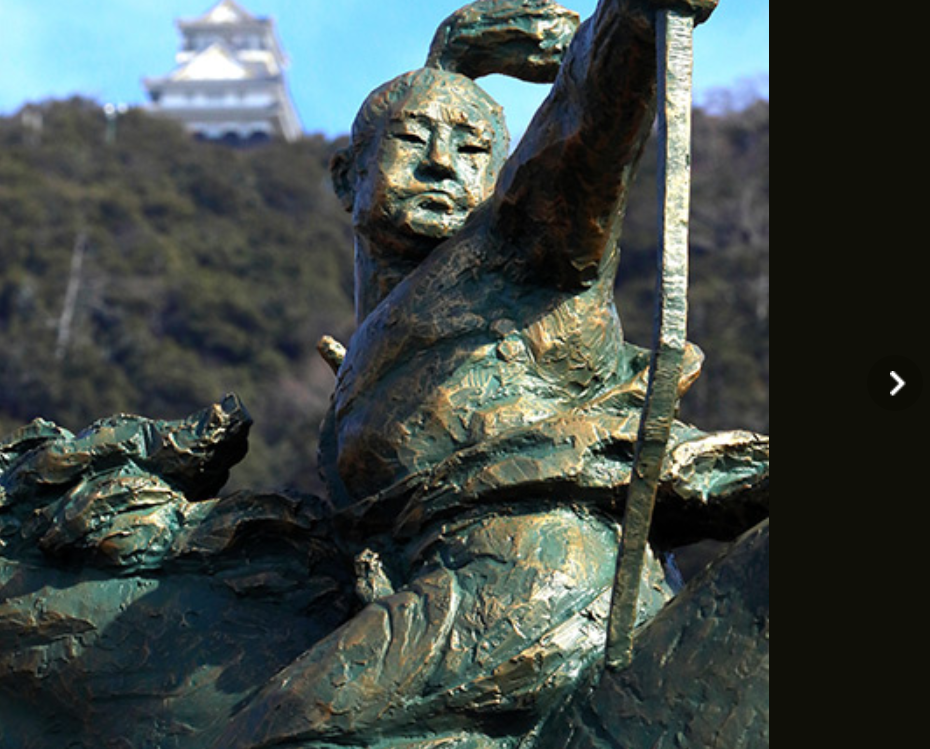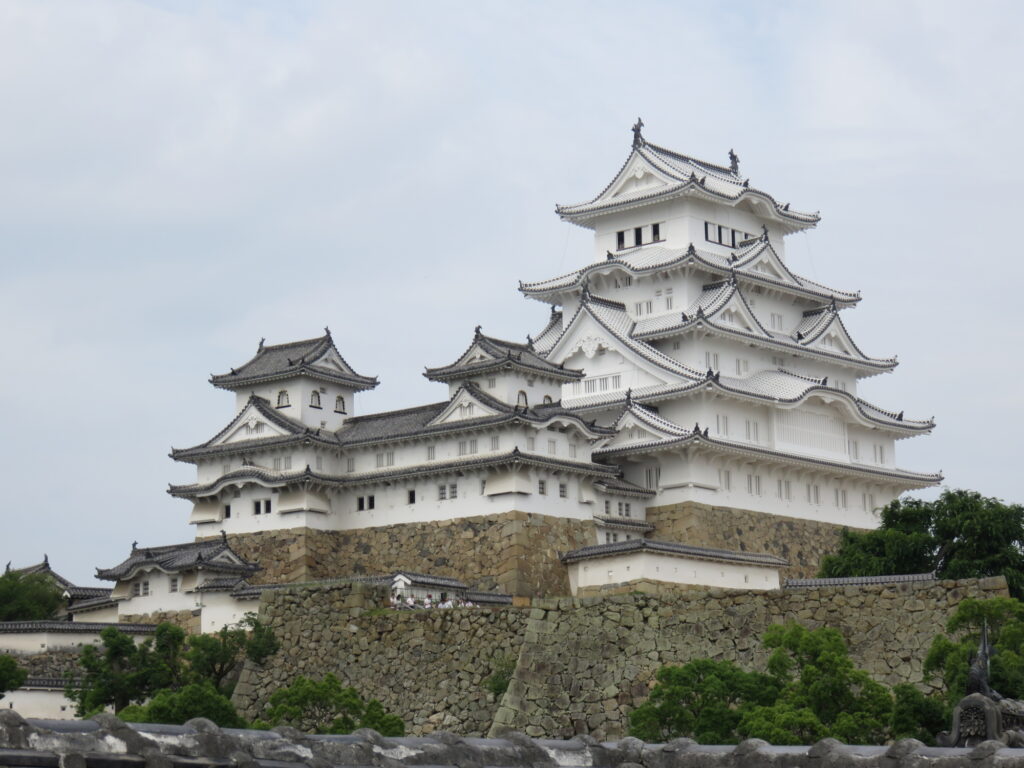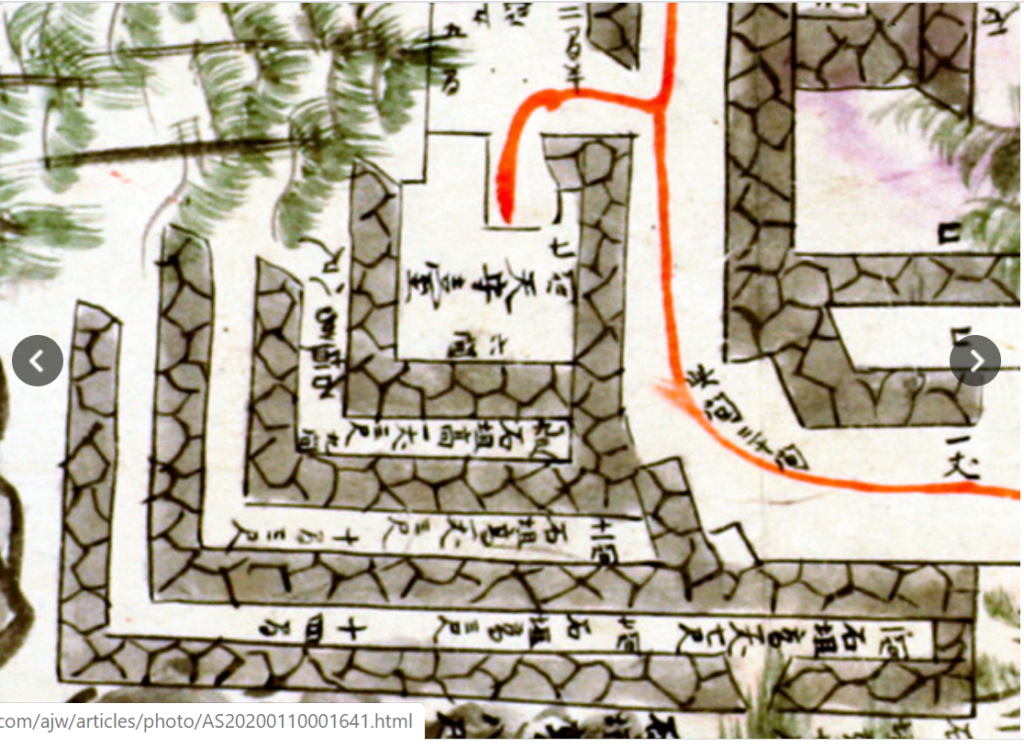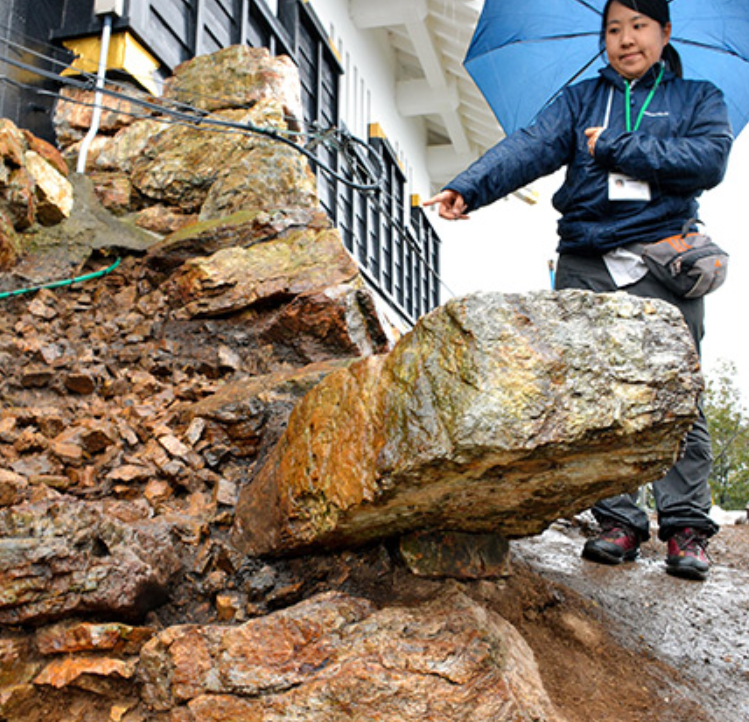Stonewall points to Japan’s oldest castle keep built by Nobunaga
This seems like another pile of rocks to the uninitiated. But stones unearthed here apparently constitute part of the oldest castle keeps ever built in Japan. The stones form part of the top section of the base of a Gifu Castle keep likely built by legendary warlord Oda Nobunaga (1534-1582).


The discovery was made last October and is regarded as significant in the study of castle building in Japan.
City officials, revealing the discovery on Jan. 7, said it is the first time researchers have identified what they believe was part of the original keep.
The hilltop castle was captured by Nobunaga during the Warring States period (late 15th to late 16th centuries).
The castle was renamed from Inabayama Castle after Nobunaga defeated its lord, Saito Tatsuoki, in 1567. He also renamed the region, then called Inokuchi, Gifu.
Luis Frois, a Portuguese missionary who visited the site two years after the takeover, wrote, “There was a gorgeous Japanese-style guest room (at the castle on the mountain),” according to the city’s education board.
A detailed image of the stone wall, including the base of the keep, is depicted in a drawing dating to the Genroku Era (1688-1704).

However, it had been believed that most of the original wall was long gone, as the structure was torn down during reconstruction work in 1910.
The excavation work covers an area of about 1,410 square meters atop Mount Kinkasan.
Team members decided to excavate around a stone sticking diagonally out of the ground near a wall where the rebuilt structure stands. After digging out about five square meters, the members found what is believed to be the original stone wall.

The section, about 1.8 meters long and 70 centimeters high, has three levels and is located above a layer at the northwestern corner that was created during the Warring States period.
The team also found a piece of stone that supports the bottom of the corner as well as areas where the stones were joined with mazumeishi pebbles to fill the gaps, matching the characteristics of walls built under Nobunaga.
In the castle drawing, a four-meter-high stone wall is depicted above the three layers of stone walls in the vicinity of the one recently discovered.
“We will continue our research to uncover all of the details,” said Mayor Masanao Shibahashi.
Hitoshi Nakai, a professor of history of castle building in Japan at the University of Shiga Prefecture, said the discovery will shed light on the history of castle building, particularly how feudal-era keeps originated.
Nakai added that similar techniques were used for building stone walls at Azuchi Castle, and noted that the same might be true for Sakamoto Castle, where a subordinate of Nobunaga, warlord Akechi Mitsuhide (1528-1582), resided.





